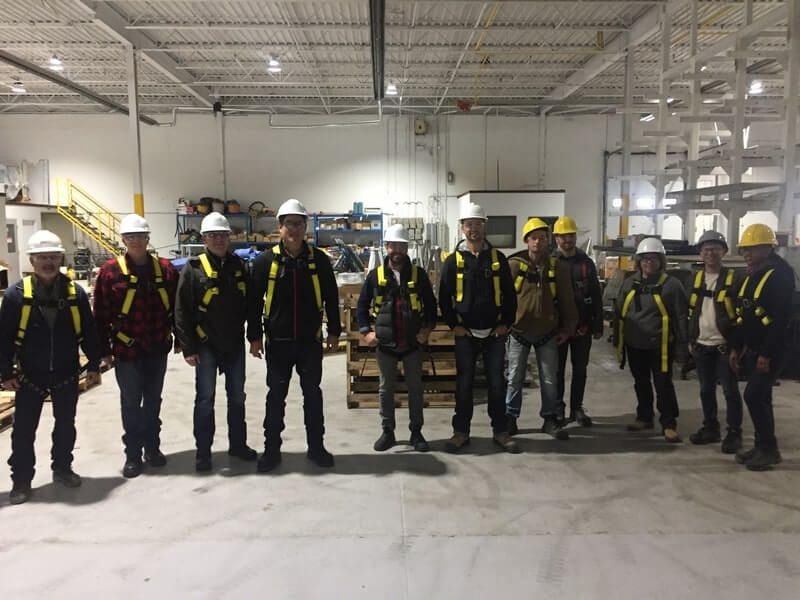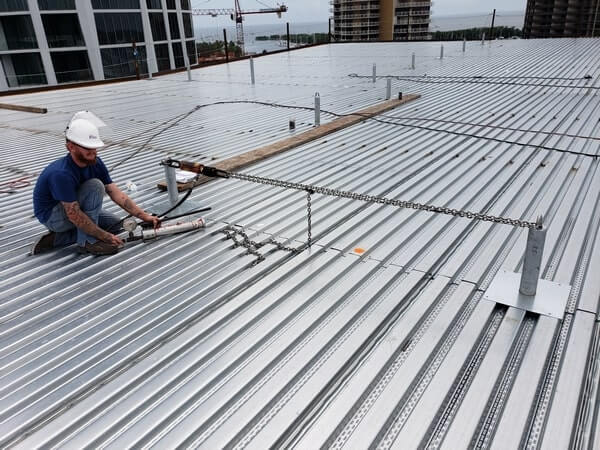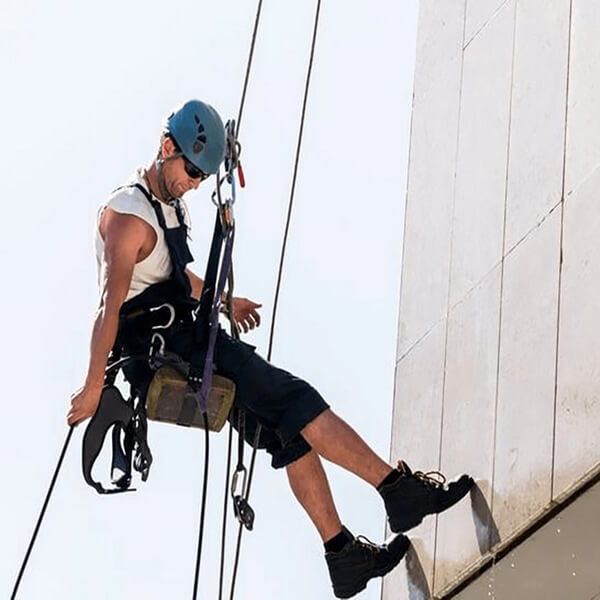Everyone is responsible for preventing falls when working at heights. Related authorities are accountable for safety considerations when on a roof.
When it comes to rooftop safety, everyone is responsible. The building owner/property manager/owner’s representative, the self-employed contractor, any subcontractor, and the worker are all responsible for safety considerations when on a roof.
The concern for health and safety on a roof becomes critical as soon as someone steps foot on a roof - not just when they “get close” to the edge! All aspects of working safely at heights must be considered, but the general rule is that fall protection is required:
- In Canada, where any section of the parapet wall is less than 36 inches (and someone is subject to a 10-foot fall)
- In the USA, it varies from state to state, but as a general rule, fall protection is required where any section of the parapet wall is less than 42 inches (and someone is subject to a 4-foot fall).
Preventing falls from heights is a priority for the Department of Labour (DOL) and the Ministry of Labour (MOL). Each expects contractors and employers with staff working at heights to actively manage any significant hazard.
Safe Use of Fall Protection Systems
To stay safe when working at heights, you must ensure that effective controls are in place to prevent people from being harmed.
To select the most effective controls, you must consider the following steps:
- Eliminate the chances of a fall by doing as much preparation work as possible before work begins. Normally, this is done by performing a fall hazard roof assessment. The assessment report will review all aspects of safe access and egress for all work activities that may take place on the roof. The intent is to isolate the worker from the risk of a fall by using permanent roof anchors, guard rails, scaffolds, and roof edge protection as a means of prevention. In some situations, a combination of controls will be required to ensure safe work.
- Edge protection is imperative. Edge protection should be used as a means of isolating workers from a fall. This includes localized lifeline and tieback anchors, guard rails, horizontal lifelines, access ladders, and catwalks. Edge protection should be provided on all the exposed edges of a roof, including the perimeter of buildings, skylights, or other fragile roof materials, and for any openings in the roof. This also applies to openings and edges of floor areas.
- Where there is a risk of workers falling through roof openings, the openings should be identified and guarded.

Checklist For Safety When Working at Heights
Worker Fall Prevention Checklist
- Have you ensured you’re properly locked into your safety harness? Get another team member to double-check.
- Have you made sure your Working at Heights certification is up to date?
- Are you familiar with all the tasks and risks on the job site that day?
- Have you checked in with the job site’s safety supervisor today before doing anything else?
- Have you familiarized yourself with all the fall protection equipment you’ll use today?
- Do you have the appropriate footwear to maintain your footing on different surfaces?
Property Manager Inspections Checklist
- Have you properly fully inspected the site?
- Have you properly fully inspected the safety equipment and harnesses?
- Have you ensured that the workers are up to date with their Working At Heights training?
Rooftop Safety Checklist

- Are workers trained or supervised to work on a roof, near the roof edge or over the edge using suspended equipment safely?
- Has a full hazard assessment been completed before work starts?
- Is there safe access to all roof areas?
- Has the property manager provided a work plan to safely access the building edge or facade?
- Have the roof and fall arrest system been inspected, reviewed, and tested if needed?
- Are workers protected from falling off roof edges and do they have a rescue plan?
- Are workers protected from falling from incomplete roofs or falling through skylights?
- Are people below the work protected from the dangers of falling materials?
- Do roof workers have appropriate footwear to prevent them from slipping?
- Are the weather conditions suitable for working on a roof?
Other Possible Considerations When Working at Heights
Working at heights can be unpredictable at times, but with proper preparation and planning, you can ensure a safe workplace for yourself and your team! Some other important factors to consider include:
- Eliminate the hazard of a fall from a roof.
- Work from the ground.
- Work from inside where there is no possibility of a fall.
- Prefabricated components at ground level or prior to installation.
- Remove complete fixtures from the ground level or shop for maintenance (e.g., air conditioning units).
- Pre-paint fixtures/roof prior to installation.
- When isolating the hazard of a fall from a roof, you can consider some additional temporary protections.
- Scaffolding and mobile scaffolds/step platforms/working in an elevating work platform.
It is the law, so doing nothing to address safety when working at heights is not an option! Remember: Safety when working at heights is EVERYONE’S responsibility!
Share this Post

